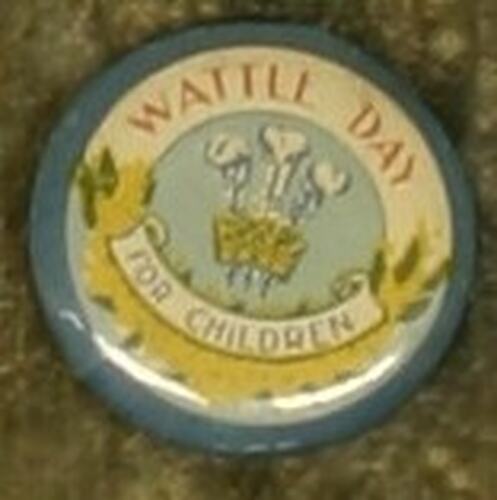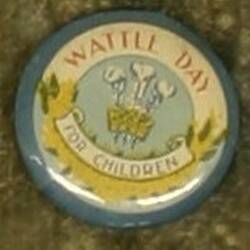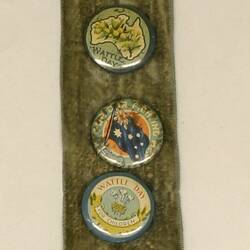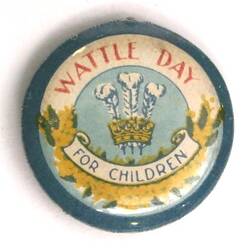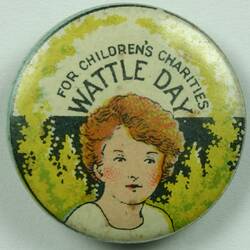Summary
Alternative Name(s): Button
'Wattle Day for Children' badge, made and used circa 1914.
The first 'national' Wattle Day was celebrated in Sydney, Melbourne and Adelaide on 1 September 1910. Wattle had become a symbol of Australia with the approach of Federation. It was particularly promoted by the Australian Natives' Association, established in Melbourne in 1871 as a non-partisan and non-sectarian friendly society for Australian-born, white men seeking to shape Australia's nationhood and identity. The ANA was a strong advocate for Federation and became an advocate for White Australia. It was a staunch supporter of trade protection and immigration restriction, and Prime Minister Alfred Deakin was a member. Public support for Wattle Day peaked during World War I, when it was a potent symbol of home for military personnel serving overseas, and a means of raising money for organisations such as the Red Cross. Beautifully designed Wattle Day badges as well as wattle sprigs were sold. The influence of Wattle Day waned as the 20th century progressed, but in 1992 the Governor-General declared 1 September National Wattle Day.
Physical Description
This circular badge has a dark blue boarder, which encloses a centre circle of pale blue, with a design of three long white objects, held together by a band of yellow (possibly wattle). This is enclosed by a circle, the top half is white and has red text, while the lower half is composed of yellow wattle blossoms and has a white banner with black text.
More Information
-
Collection Names
-
Collecting Areas
-
Acquisition Information
Donation from Mrs Bronwyn Mitchell, 15 Feb 1994
-
Date Made
-
Date Used
-
Inscriptions
Text: 'WATTLE DAY; FOR CHILDREN
-
Classification
-
Category
-
Discipline
-
Type of item
-
Overall Dimensions
2.2 cm (Width)
-
Keywords
Fundraising, Wars & Conflicts, Wattle Day, World War I, 1914-1918
